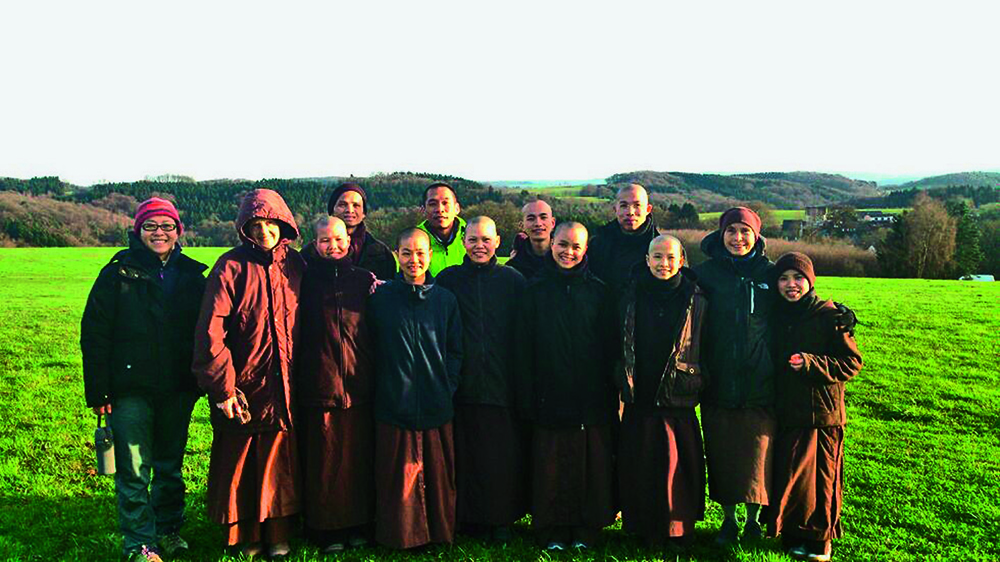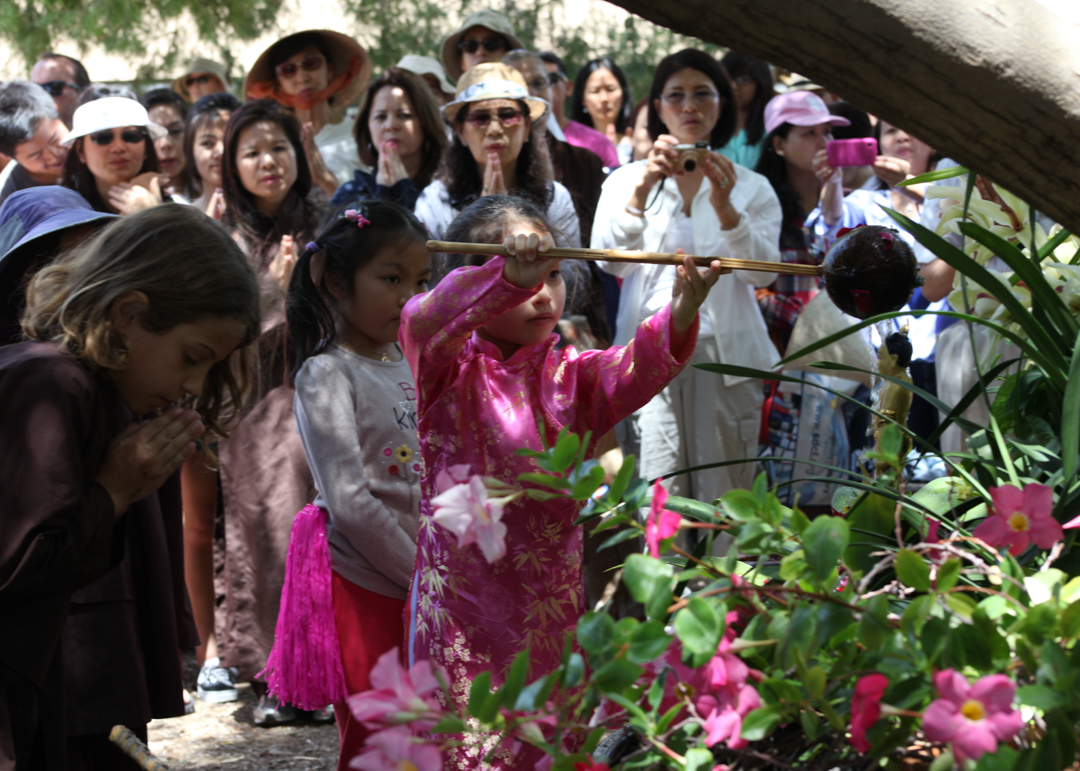By Monastics of the EIAB

With immense joy and gratitude, we held the formal inauguration of the renovated Ashoka Institute of the European Institute of Applied Buddhism (EIAB) in August 2012, in Waldbröl, Germany. The EIAB was established as a non-profit organization under German law on November 5, 2007. The Ashoka Institute was the first building acquired to house the EIAB, purchased on September 10,
By Monastics of the EIAB

With immense joy and gratitude, we held the formal inauguration of the renovated Ashoka Institute of the European Institute of Applied Buddhism (EIAB) in August 2012, in Waldbröl, Germany. The EIAB was established as a non-profit organization under German law on November 5, 2007. The Ashoka Institute was the first building acquired to house the EIAB, purchased on September 10, 2008.
It was built in 1897 as a psychiatric hospital. Under the Nazi regime it was remodeled to serve as a hotel, but instead it was used as a military hospital during the war. After the Second World War it became a general hospital, and finally, the German Federal Military managed it until 2006. The second building of EIAB is the Great Compassion Monastery, which was acquired on August 13, 2009, as the monastic community needed a residence during the renovation of the Ashoka Institute. In June 2010, the first phase of the renovation was completed, making one fifth of the Ashoka Institute habitable.
The inaugural celebration marked the historical opening of the entire ground floor of the Ashoka Institute, which was open to the public for the first time since its acquisition four years before, and the fifth anniversary of the establishment of the EIAB. The inauguration was presided over by Thich Nhat Hanh and Mr. Peter Köster, the Mayor of the City of Waldbröl.
TENDERNESS AND TOGETHERNESS
The inauguration of the ground floor was also the opening day of the long-term “Healing Hearts” exhibit, an artistic installation of seven hundred hearts to honor the psychiatric patients who lived in the building. The art was displayed in key locations of the impressive ground floor, available for visitors to appreciate all year round. According to our research, the Nazis moved all the patients who were housed in our building, a former hospital for the mentally handicapped, to nearby Hausen in order to reconstruct the hospital into a Kraft durch Freude Hotel for the Nazi Party. Many of these patients were spared the first wave of the “euthanasia” program in Hausen by hospital staff who intentionally delayed the process of selecting which patients would be killed.
Of the seven hundred patients, 320 who could work were allowed to stay in Hausen, and the majority of them survived both euthanasia and the hardships of war. But the rest who could not work were sent to other institutions where most of them were murdered by intentional starvation, hypothermia, or poisoning.
We invited everyone in the community to join us in remembering them. Several school groups visited the EIAB to learn more about the history of the building and its inhabitants. Some classes made their hearts in the EIAB itself. We invited individuals in the local community of Waldbröl, as well as practitioners near and far, to each make a heart in memory of one of the patients. Some found the process of making the hearts truly healing, not just for the seven hundred patients of the EIAB building but also for healing wounds in their family. Making a heart became a way to honor and remember relatives with great suffering or with a mental illness.
A number of Sanghas decided to take up the sewing of hearts as a mindfulness practice, a meditation together, an act of engaged Buddhism. There was also a healing atmosphere of tenderness and togetherness making the hearts with groups of children who came on retreats at the EIAB and elsewhere. The children understood immediately the importance of such a project. Their eagerness and wholeheartedness in sewing the hearts was truly impressive. We always began by asking if they knew anyone who was mentally handicapped. If so, the children were invited to sew a heart with this person in mind.
Even before the final due date, we received over seven hundred Healing Hearts! In the light of interbeing each heart reminds us that we must also remember and pray for all those who perpetrated the euthanasia, starvation, and poisoning of mentally handicapped people. We know that somehow they are also victims of the ignorance, hatred, discrimination, and violence in them and around them.
We are grateful to:
The many schools whose students and teachers made hearts;
The many Sanghas and Buddhist centers who lovingly made hearts together;
The other local organizations who supported the project;
The newspapers and websites that published articles on the project;
The numerous children and adults from Germany, Belgium, Holland, Luxembourg, England, Ireland, Italy, France, USA, Australia, Hong Kong, and beyond who sent hearts individually.
Reprinted from EIAB Newsletter, August 2012

